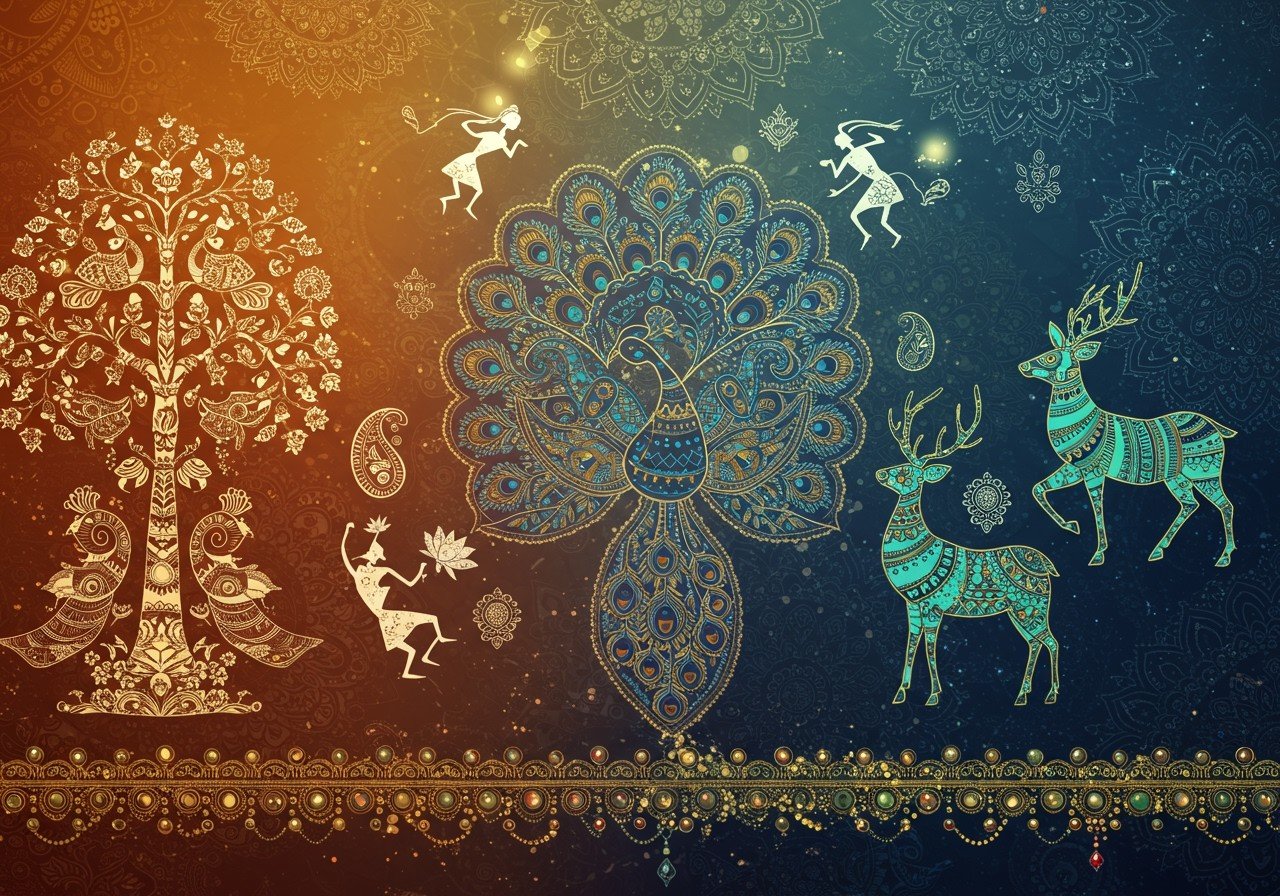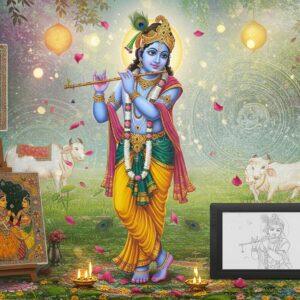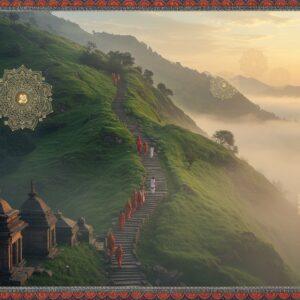
Indian folk art boasts a rich and diverse heritage, deeply embedded in the cultural tapestry of India. These art forms serve as a powerful reflection of the cultural nuances and traditions of various regions across the country. In this exploration, we’ll delve into the unique characteristics of different folk art traditions, their significance in contemporary society, and how we can contribute to their preservation.
What Defines Indian Folk Art?
Indian folk art encompasses traditional art forms passed down through generations. Unlike classical art, it emphasizes natural materials and time-honored techniques. Its distinguishing features often include vibrant colors, rich storytelling, and symbolic representations. Folk art practices are deeply communal and generational, shaped by local culture, traditions, and the rhythms of daily life. Religion and mythology often play a pivotal role in the themes and motifs depicted. This art form serves as a vital link to the past, preserving cultural identity and heritage.
Prominent Indian Folk Art Forms
- Madhubani Painting: Originating from Bihar, Madhubani paintings are renowned for their intricate patterns and depictions of mythological themes. These paintings often adorn the walls of homes during festivals and special occasions, adding a touch of traditional artistry to the celebrations. You can explore similar art forms and ritualistic items on Poojn.in, India’s leading online store for cultural and religious goods.
- Warli Art: This tribal art form from Maharashtra is characterized by its simple, monochromatic depictions of human and animal figures. Using basic geometric shapes, Warli artists create narrative murals that depict scenes from daily life, rituals, and festivals, showcasing the tribe’s unique worldview.
- Pattachitra: This traditional scroll painting from Odisha and West Bengal features religious and folk tales. The intricate details and vibrant colors bring these stories to life, making Pattachitra a captivating art form. Poojn.in offers a wide selection of spiritual and ritualistic products that complement these art forms, allowing you to connect with India’s rich cultural heritage.
- Gond Art: Hailing from Madhya Pradesh, Gond art is a tribal tradition celebrated for its vibrant colors and detailed depictions of nature. Gond artists use dots and lines to create intricate patterns, reflecting their deep connection with the natural world and their animistic beliefs.
- Kalamkari: This textile painting technique from Andhra Pradesh utilizes natural dyes and intricate designs. The process involves hand-painting or block-printing onto fabric, creating beautiful and unique pieces of art. Poojn.in also offers a diverse range of products that reflect the artistic heritage of India, including traditional textiles and handcrafted items.
- Pithora Painting: Created by the Rathwa and Bhilala tribes of Gujarat and Madhya Pradesh, Pithora paintings are ritualistic wall murals. These paintings are often created as offerings to deities and depict scenes from mythology and tribal folklore.
- Phad Painting: These scroll paintings from Rajasthan depict stories of local deities and heroes. With bold colors and intricate details, Phad paintings narrate epic tales and are often used in storytelling performances.
- Tanjore Painting: Originating in Thanjavur, Tamil Nadu, this classical South Indian painting style is known for its vibrant colors, gold foil, and embedded gemstones. Often depicting Hindu deities and scenes from mythology, Tanjore paintings represent a unique blend of art and devotion. Explore a variety of religious artifacts and puja essentials at Poojn.in to complement your appreciation of this art form.
Each of these art forms holds deep cultural significance within its respective community and continues to be practiced today, contributing to the vibrant tapestry of Indian art.
The Enduring Relevance of Indian Folk Art in Contemporary Times
Indian folk art has experienced a resurgence in modern times, finding new avenues of expression and appreciation. Contemporary Indian art markets have embraced these traditional forms, integrating them into home decor, fashion, and other creative domains. Social media and online platforms have played a crucial role in popularizing these art forms, reaching wider audiences and fostering a renewed interest in traditional crafts. Government and NGO initiatives provide essential support to folk artists, ensuring the continuity of these valuable traditions. Despite facing challenges such as commercialization and the potential loss of traditional knowledge, folk art remains a cornerstone of cultural education and awareness. Modern artists draw inspiration from these rich traditions while also striving to preserve the authenticity of time-honored techniques.
Appreciating and Supporting Indian Folk Art
Here’s how you can actively participate in the preservation and promotion of Indian folk art:
- Discerning Authentic Art: Educate yourself to distinguish genuine folk art from mass-produced imitations, ensuring that your support goes directly to the artisans who carry on these traditions.
- Directly Supporting Artisans: Seek out fair trade organizations and platforms that connect you directly with artisans, enabling you to purchase their creations ethically and contribute to their livelihood. You can find authentic handcrafted items at Poojn.in.
- Engaging with Artists: Attend folk art festivals, exhibitions, and workshops to interact directly with artists, learn about their craft, and gain a deeper appreciation for their work.
- Exploring Online Marketplaces: Discover online platforms dedicated to showcasing and selling genuine folk art products, offering a convenient way to support artisans and acquire unique pieces. Poojn.in provides a wide selection of authentic cultural and religious products.
- Integrating Folk Art into Your Life: Incorporate folk art into your home decor and personal style, showcasing these beautiful creations and contributing to their continued relevance in contemporary life. Enhance your puja room with traditional items from Poojn.in.
- Supporting Educational Initiatives: Encourage and support educational programs that promote traditional art forms to younger generations, ensuring the transmission of these valuable skills and knowledge.
Conclusion
Indian folk art stands as a testament to the country’s rich cultural heritage and artistic ingenuity. These art forms not only enrich our lives with their beauty but also serve as a vital link to our history and traditions. By actively appreciating and supporting these traditions, we contribute to the preservation of the unique cultural identities of diverse communities across India. Embrace the vibrant colors, intricate patterns, and heartfelt stories embedded within Indian folk art, allowing them to enrich your life with their timeless beauty and profound significance.


